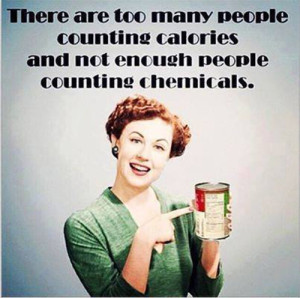
I get it. Everyone has a different (strong) opinion on the best diet, so it can be really hard to find the truth.
Honestly, there are so many trendy diets out there that half the time when people ask me about them, I’ve never even heard of it.
“I just started the (insert trendy diet) and I love it!” exclaims my friend.
“Really? That’s great. I’m happy you found something that works for you,” I say.
“So … what kind of diet do you follow?” asks my friend.
“I’m a qualitarian.” … and then queue the awkward silence.
What does it mean to be a qualitarian? It means, first and foremost, that you choose to be the gatekeeper for what goes into your body. I eat real, healthy foods. I focus on quality over quantity.
The “calorie is a calorie” myth is woefully outdated and one of nutrition’s biggest fallacies. To understand why, let’s compare a Double Gulp from 7-Eleven with 21 cups of broccoli, both of which contain 750 calories.
That hulking soda delivers those calories as 46 teaspoons of sugar. Hormonal havoc ensues as sugar elevates insulin, blocks the appetite-control hormone leptin, and activates our pleasure-based reward center to consume more sugar and fuel our addiction. Chronic inflammation, insulin resistance, and weight gain are the inevitable results.
Those 750 calories of broccoli, on the other hand, provide 67 grams of fiber (far more than the average American eats) yet only about one and a half teaspoons of sugar. If we ate that much broccoli (unlikely!), none of the hormonal chaos would occur. In fact, we would optimize metabolism, lower cholesterol, reduce inflammation and boost detoxification.
The take home is that quantity does matter—too much healthy food becomes unhealthy—but quality matters far more. Rather than count calories or anything else, we want to be qualitarians in our diet. The rest takes care of itself.
Eight Ways to Become a Qualitarian
The most important thing we can do to heal our body is focus on food quality. Americans spend less than 10 percent of their income on food, while Europeans spend about 20 percent.
When it comes to calories, quality matters more than quantity. Focusing on calories helps us feel satisfied while naturally avoiding cravings and attraction to food that won’t nourish us. Here are eight ways to do that:
1. Avoid highly processed, factory-manufactured Frankenfoods. Choose fresh vegetables, fruit, whole grains, beans, nuts, seeds and lean animal protein such as fish, chicken and eggs. Learn about 10 banned frankenfoods that Americans still eat.
2. Buy high-quality animal foods. Look for animal products that are pasture-raised, grass-fed, antibiotic-free, hormone-free and pesticide-free. Go on a low-mercury diet by sticking with small, wild or sustainably farmed fish.
3. Go organic. Pesticides and chemical fertilizers poison our metabolism, thyroid function, sex hormones and our planet. Whenever possible, buy organic. If buying only organic isn’t an option, consider the “Dirty Dozen” and buy these foods organic.
4. Stay local. Seasonal, local foods we find at farmers’ markets or community-supported agriculture projects (CSAs) are healthier, taste better, are typically sustainably grown and help us recognize the intimate relationship between the ecosystem of our body and the broader ecosystem in which we all live.
8. Avoid gluten. Most is from Franken Wheat, so look for heirloom wheat (Einkorn) or sprouted grains. Not gluten sensitive? Consider it an occasional treat.
6. Eat mostly plants. Plants should form 75 percent of our diet and our plate.
7. Avoid dairy. Dairy is great for growing calves into cows, but not for humans. Try organic goat or sheep products, but only as a treat.
8. Eat the right fats. Steer clear of vegetable oils like soybean oil, which now comprises about 10 percent of our calories. Focus instead on omega 3 fats, nuts, coconut, avocados, and yes, even saturated fat from grass-fed or sustainably raised animals. Here are some more tips on eating healthy fats.
Editor’s Note: We realize that many trendy diets follow some or many of these principles, but have a tendency to overcomplicate the process.






Add comment